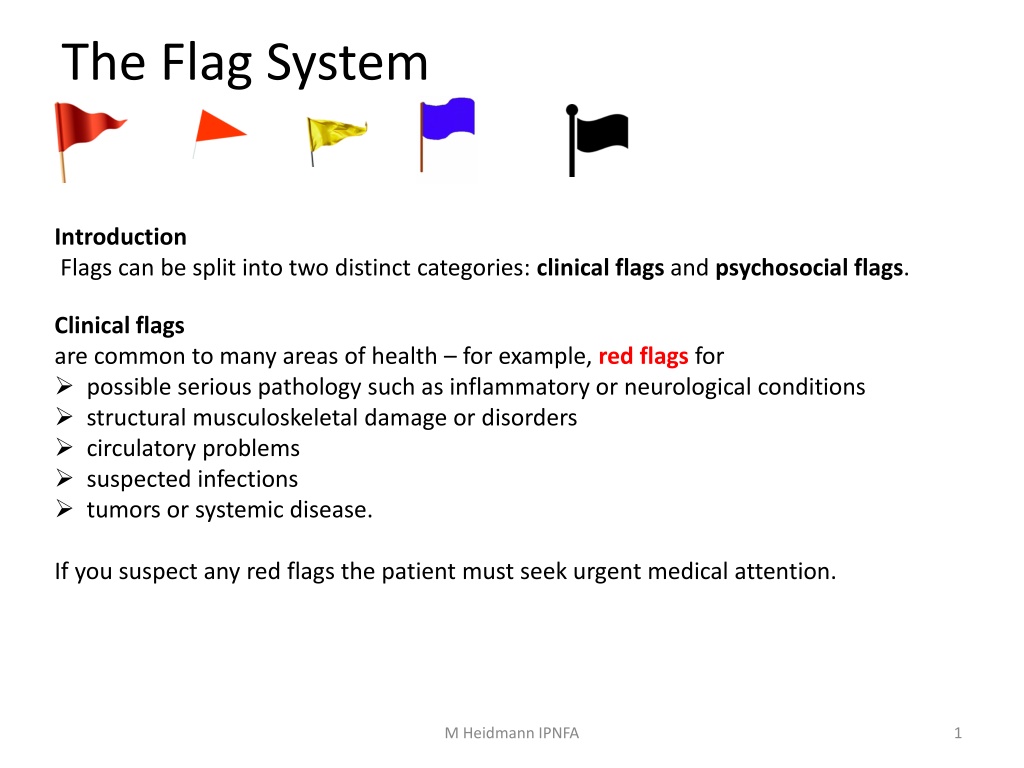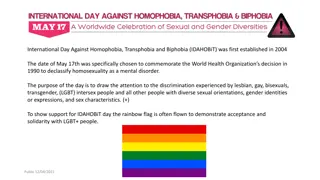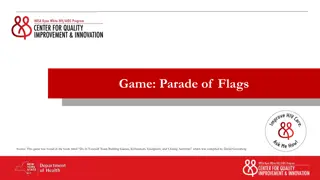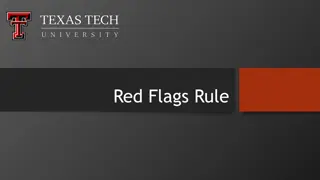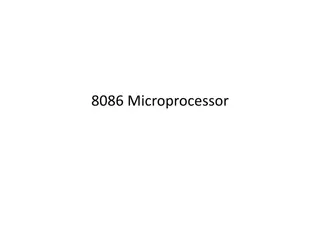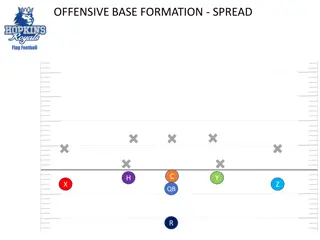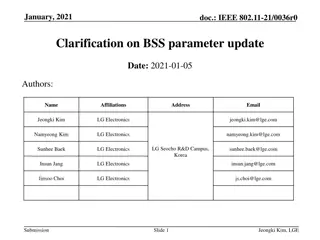The Flag System: Identifying Clinical and Psychosocial Flags in Health Settings
The Flag System categorizes flags into clinical and psychosocial categories, such as red flags for serious pathology and orange flags for mental health issues. Psychosocial flags like yellow, blue, and black identify factors affecting recovery and return-to-work processes. Screening tools like PHQ-2 help in identifying these flags. Understanding these flags is crucial for healthcare providers to tailor interventions effectively.
Download Presentation

Please find below an Image/Link to download the presentation.
The content on the website is provided AS IS for your information and personal use only. It may not be sold, licensed, or shared on other websites without obtaining consent from the author. Download presentation by click this link. If you encounter any issues during the download, it is possible that the publisher has removed the file from their server.
E N D
Presentation Transcript
The Flag System Introduction Flags can be split into two distinct categories: clinical flags and psychosocial flags. Clinical flags are common to many areas of health for example, red flags for possible serious pathology such as inflammatory or neurological conditions structural musculoskeletal damage or disorders circulatory problems suspected infections tumors or systemic disease. If you suspect any red flags the patient must seek urgent medical attention. M Heidmann IPNFA 1
The Flag System Recently, orange flags were added to the spectrum(1&2) Orange flags can include excessively high levels of distress, major personality disorders, post-traumatic stress disorders, drug and alcohol abuse/addictions or clinical depression. Screening for orange flags is performed by asking questions regarding clinical depression or other personality disorders. Screening for clinical depression is completed with the Patient Health Questionnaire-2 (PHQ-2)(6). The purpose of the PHQ-2 (see appendix) is not to diagnose depression, but rather screen for it in a "first-step" approach M Heidmann IPNFA 2
The Flag System Psychosocial flags allow us to identify aspects of the person, their problem and their social context, and how those factors affect the recovery and return-to-work process. The concept was introduced in 1997 by Kendall et al(3)and looked at factors that identified patients who were at risk of developing chronic disability, and did not recover as was expected for their condition. Psychosocial flags have been subdivided over the years to reflect the different interactions that can affect recovery. As a result, they are now referred to as yellow, blue and black flags[5]. M Heidmann IPNFA 3
The Flag System Yellow flags cover the features of the person which affect how they manage their situation with regard to thoughts, feelings and behaviours. Blue flags concern the workplace and the employee s perceptions of health and work. Black flags are about the context and environment in which that person functions, which includes other people, systems and policies. Black flags can block or limit the helpful activity of healthcare providers and workplace support. M Heidmann IPNFA 4
The Flag System Below is a table with some examples of a flag colour, the nature of the flag and examples of clinical signs to look for on assessment(4): 5 M Heidmann IPNFA
References 1 Main CJ, Phillips CJ, Watson PJ. Secondary prevention in health-care and occupational settings in musculoskeletal conditions focusing on low back pain. In: Schultz IZ, Gatchel RJ, eds. Handbook of Complex Occupational Disability Claims: Early Risk Identification, Intervention and Prevention. New York, NY: Kluwer Academic/Plenum; 2005:387 404. 2 Main CJ, Sullivan MJ, Watson PJ. Risk identification and screening. In: Main CJ, Sullivan MJ, Watson PJ, eds. Pain Management: Practical Applications of the Biopsychosocial Perspective in Clinical and Occupational Settings. Edinburgh, Scotland: Churchill Livingstone Elsevier; 2008:97 134. 3 Kendall NA, Linton SJ, Main CJ. Guide to Assessing Psychosocial Yellow Flags in Acute Low Back Pain: Risk Factors for Long-Term Disability and Work Loss. Wellington, New Zealand: Accident Rehabilitation and Compensation Insurance Corporation of New Zealand and the National Health Committee; 1997 4 Leerar,P. Boissonnault,W. Domholdt,E. Roddey,T. Documentation of Red Flags by Physical Therapists for Patients with Low Back Pain.J Man Manip Ther. 2007; 15(1): 42 49. 5 Nicholas MK1, Linton SJ, Watson PJ, Main CJ; "Decade of the Flags" Working Group. Early identification and management of psychological risk factors ("yellow flags") in patients with low back pain: a reappraisal.fckLRPhys Ther. 2011 May;91(5):737-53. doi: 10.2522/ptj.20100224. Epub 2011 Mar 30. 6 Kroenke K, Spitzer RL, Williams JB. The Patient Health Questionnaire-2: validity of a two-item depression screener. Med Care. 2003 Nov;41(11):1284-92. http://www.physio-pedia.com/The_Flag_System M Heidmann IPNFA 6
Appendix Patient Health Questionnaire-2 Over the past 2 weeks, how often have you been bothered by any of the following problems? Little interest or pleasure in doing things Feeling down, depressed or hopeless Answers: 0-Not at all, 1-Several days, 2-More than half the days, 3-Nearly every day. Scoring: 0 points for "Not at all" answer, 1 point for "several days", 2 points for "more than half the days", and 3 points for "nearly every day. The cutoff score for screening purposes is 3. If the individual scores >3, continue with the PHQ-9 for further assessment of depression. M Heidmann IPNFA 7
